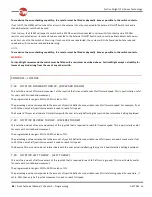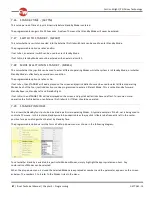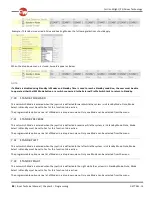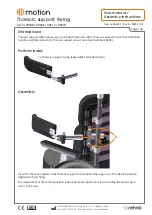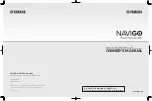
Curtiss-Wright | PG Drives Technology
SK77981-14
86 | R-net Technical Manual | Chapter 3 – Programming
7.23
INVERT FWD REV JS AXIS, INVERT LEFT RIGHT JS AXIS & SWA P JOYSTICK AXIS - (INVERT F/R,
INVERT L/R & SWAP AXES)
These three parameters are closely related, so are covered in one section. The parameters allow eight different joystick
direction configurations, or orientations. For exampl e, it may be required that the joystick has to be pulled in reverse to effect
forward drive. In this instance, it would simply be a case of setting Invert Fwd Rev JS Axis to Yes, however, there are many other
combinations and these are best explained in the form of a table.
Required Orientation
Required Programming
Forward
Reverse
Left
Right
Invert F/R
Invert L/R
Swap Axis
Forward
Reverse
Left
Right
No
No
No
Reverse
Forward
Left
Right
Yes
No
No
Forward
Reverse
Right
Left
No
Yes
No
Reverse
Forward
Right
Left
Yes
Yes
No
Left
Right
Reverse
Forward
No
No
Yes
Left
Right
Forward
Reverse
Yes
No
Yes
Right
Left
Reverse
Forward
No
Yes
Yes
Right
Left
Forward
Reverse
Yes
Yes
Yes
CONTROLS – PROFILED
7.24
CHANGE MODE WHI LE DRIVING - (CMID)
This sets whether Mode changes are permitted while the wheelchair is driving.
The programmable options are Yes and No.
7.25
SLEEP TIMER - (SLEEP)
This sets the period of joystick (or other type of Input Device) inactivity before the system will automatically power down.
The programmable range is 0 minutes to 30 minutes in steps of 1 minute. If set to a value of 0, then the system will never
automatically power-down.
STANDBY OPERATION EXPLAINED
Standby Mode provides a means for the user to select Profile and Modes without using switches or buttons. This is achieved by
using joystick deflections to select and enter Profiles and/or Modes.
There are two ways to enter Standby Mode. These are set by the parameters, Standby Time and Switch to Standby, and are
explained below.
While in Standby Mode, the operation of the joystick is set by the parameters, Mode Selection in Standby, Standby Forward,
Standby Reverse, Standby Left, Standby Right and Remote Selection. Each is explained below.













